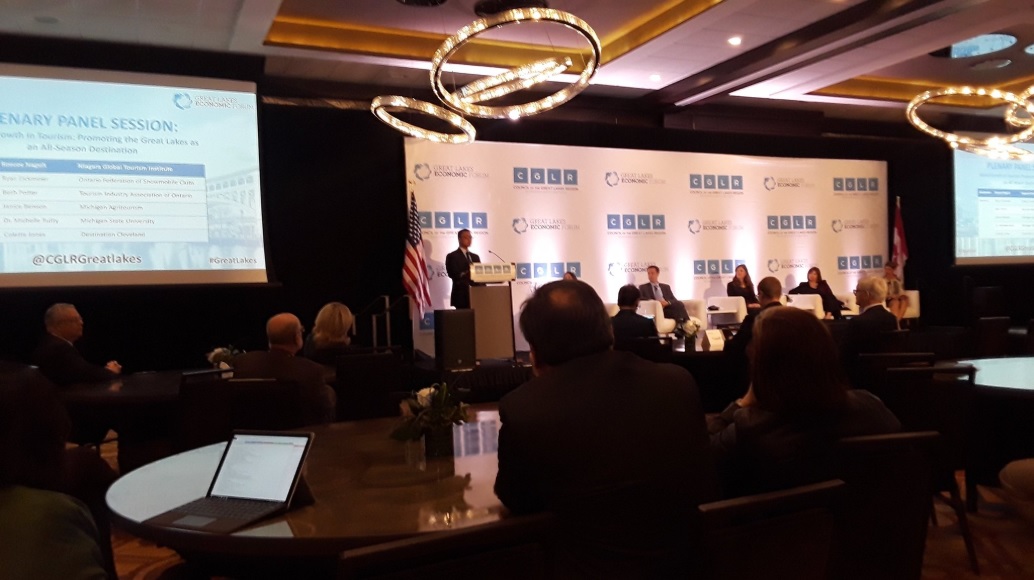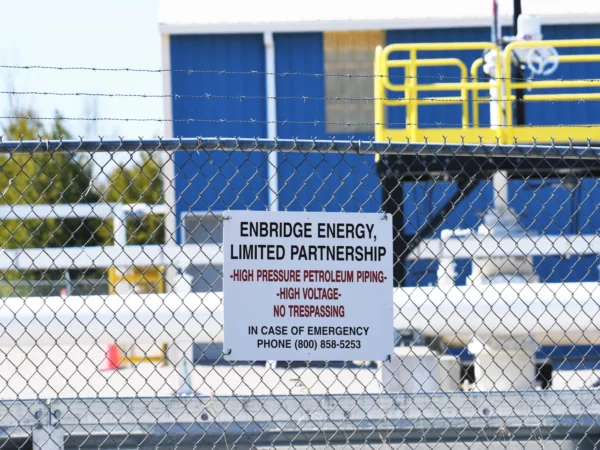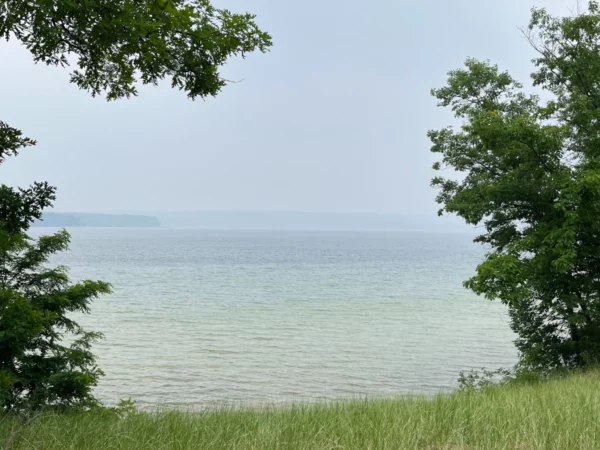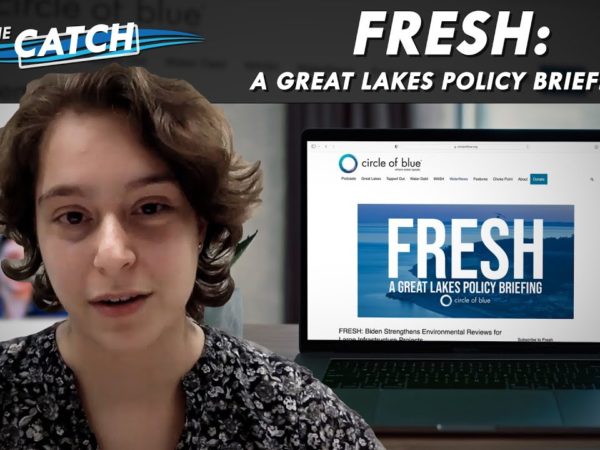
How shipping, technology, tourism and security play into the economic outlook of the Great Lakes region was the focus of the recent Council of the Great Lakes Region’s fifth annual forum in Cleveland.
Held May 6-8, more than 100 people attended, and heard from experts on a variety of subjects, who shared their knowledge in presentations and panels.
Three of the more prominent topics touched on by the speakers were technology and data—the ways each can be applied in industries to boost growth—as well as how the tariff tensions between the U.S. and China are impacting the Great Lakes.
Great Lakes Now attended the forum. Here are five takeaways:
1) Slow economic growth but low chances of a recession
Doug Porter, the managing director and chief economist of the BMO Financial Group, gave a presentation on the general state of the Great Lakes economy, in which he talked about a slowdown of growth in Canada and the U.S. after a strong 2017 for the former and 2018 for the latter.
Despite the slowdown, the risks of a recession were low, he said.
“While we can’t dismiss risks of a recession, we do think that risk of a downturn in the next 18 months at this point is low,” Porter said.
2) Tariffs on the mind
China-U.S. trade tensions continue to affect the region.
“Right now it is the single biggest risk for the North American economy,” Porter said.
Tariffs also were on the mind of numerous presenters and panelists at the forum, and it was a topic touched on during multiple sessions.
“What does life look like when you’re just in retaliation?” Maryscott Greenwood, CEO of the non-partisan nonprofit Canadian-American Business Council, said in a panel on global trade partnerships. “It’s ugly and it costs real people, real farmers, money.”
Luis German Restrepo, executive director of ProColombia USA, an agency part of the Colombian government, also spoke on the panel, sharing how the tariff situation is driving Chinese business away from the U.S. and toward countries like his own.
“They are knocking at our doors,” he said. “We have a $10 million project with China right now, just because of what’s happening, in infrastructure.”
3) Great Lakes climate change update
Water levels have been increasing in the Great Lakes, but so have air temperatures and amount of precipitation.
Michelle Rutty, an assistant professor of sustainable tourism at Michigan State University, spoke at the forum about some of the general trends in climate change in the Great Lakes region.
Air temperatures are increasing in the Great Lakes region at a faster rate than the rest of the continental U.S., and the waters of the lakes have warmed at twice the rate of the air temperature, according to Rutty.
A reduction in ice cover on the lakes has led to more humid air, which means more precipitation, which in turn means more severe weather events.
“It’s projected to sort of continue along that trend,” Rutty said. “If you’re in a region where you see a lot of heavy storms, you’re likely to see more of that moving forward.”
Read the Great Lakes Now coverage on how early flooding and potential record-high water levels are currently impacting Great Lakes residents and cities.
4) Red flag on red tape
Researchers at George Mason University’s Mercatus Center created a tool that could analyze regulatory code to find the words and phrases “shall,” “must,” “may not,” “prohibited” and “required” and found that federal regulatory restrictions had increased from 400,000 in 1970 to more than a million by 2010.
And they’ve continued to rise in the decade since then.
“All the studies we’ve seen so far have found a negative relationship,” Patrick McLaughlin, director of policy analytics and senior research fellow at Mercatus Center, said. “When there’s regulatory accumulation, economic growth is slowed.”
“This isn’t to say necessarily that regulation is a bad policy because it deters growth,” he added. “There’s cost and benefit to each policy choice.”
Specific to the Great Lakes region, New York has the highest amount of regulatory restrictions at 307,636, while Michigan has the lowest at 83,484. But that’s just for the U.S.
Canada beats all the Great Lakes states out with Ontario at 77,139 and Quebec at 59,362.
That gap is looking to widen even further with plans in Canada to further reduce regulatory restrictions.
Todd Smith, Ontario’s minister of economic development, job creation and trade, spoke at the forum as well, mentioning the commitment Ontario made in April to a 25 percent reduction in red tape by 2020.
5) PFAS
No new announcements or discoveries were made at the forum, but PFAS remains an area of concern and priority for the EPA, according to Kurt Thiede, the EPA chief of staff for Region 5.
Region 5 covers Illinois, Indiana, Michigan, Minnesota, Ohio, Wisconsin and the 35 federally recognized tribes within the region.
“We recognize that addressing PFAS is not just an EPA priority, but it’s also a priority for the nation,” Thiede said.
Watch the Great Lakes Now PFAS documentary and the PFAS update in our new monthly show. MLive, which first broke the PFAS story, continues to cover developments on the crisis here.




